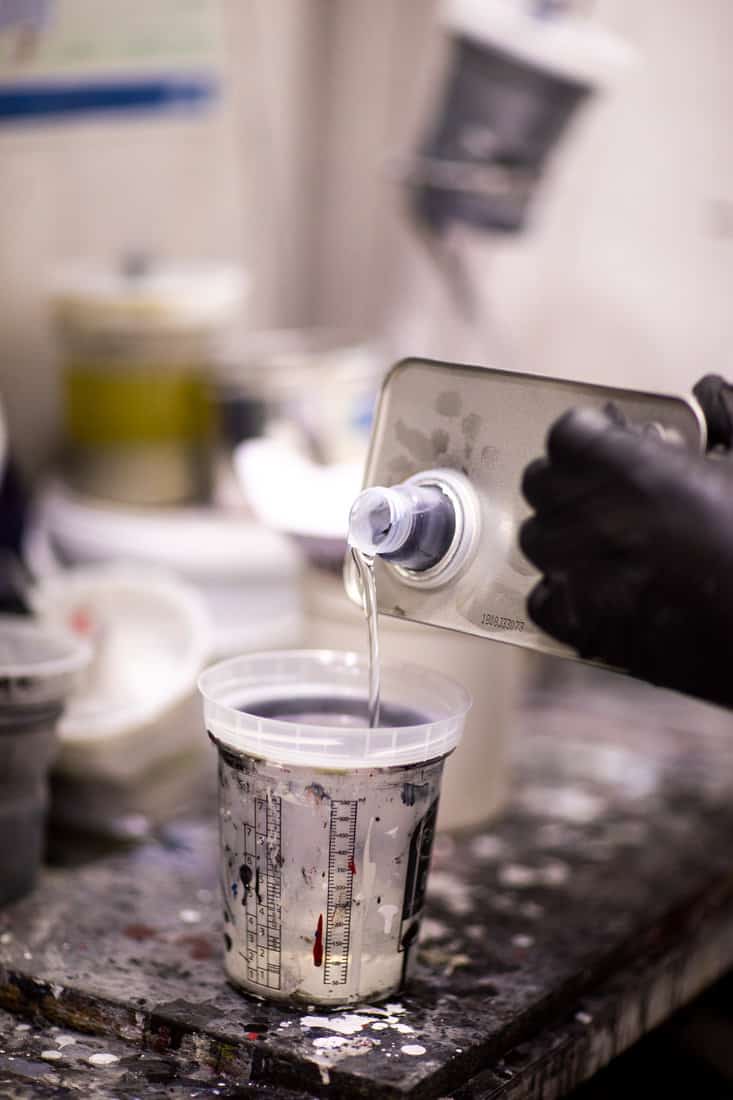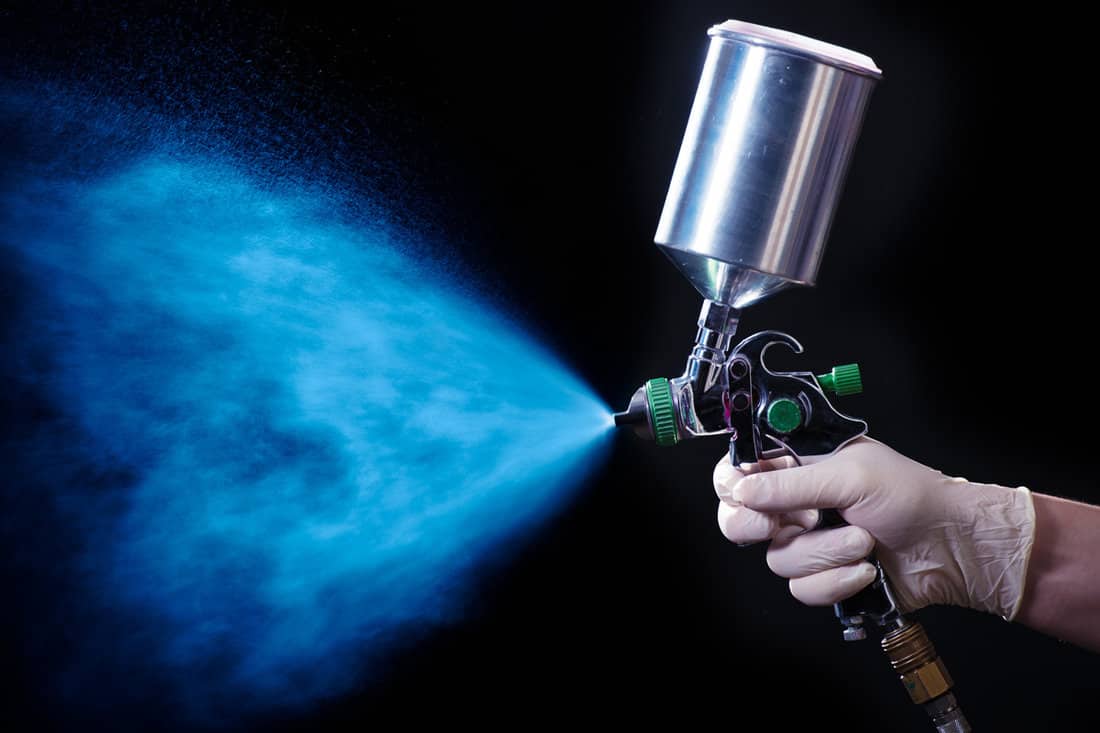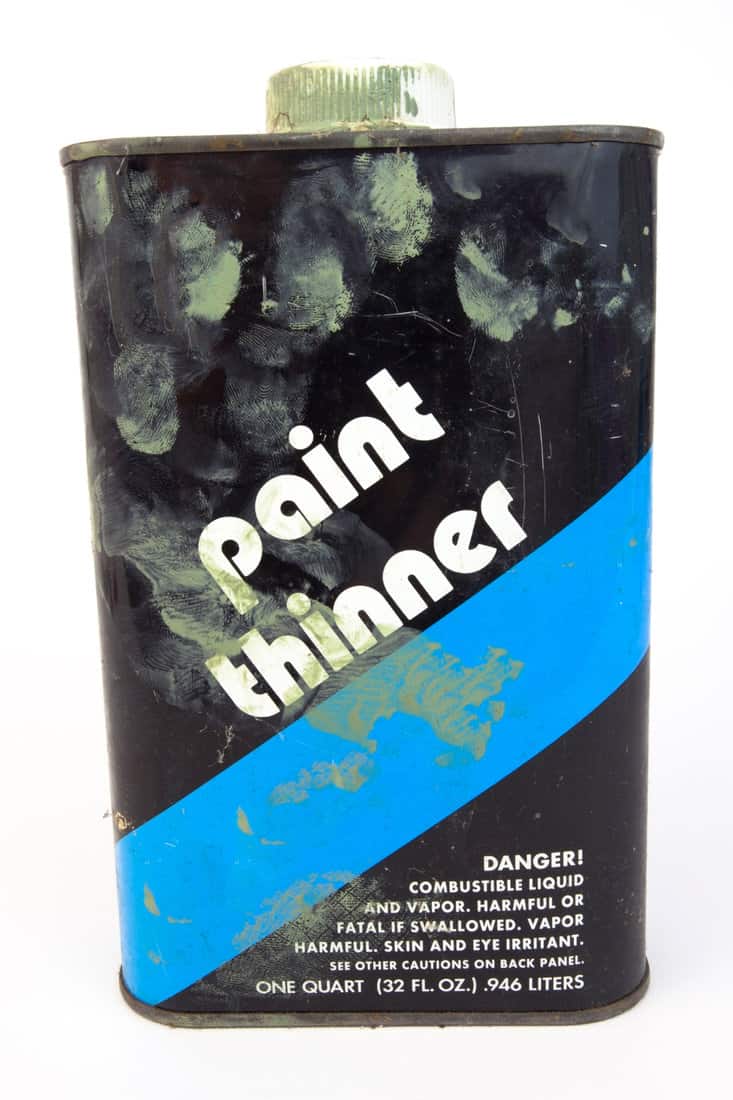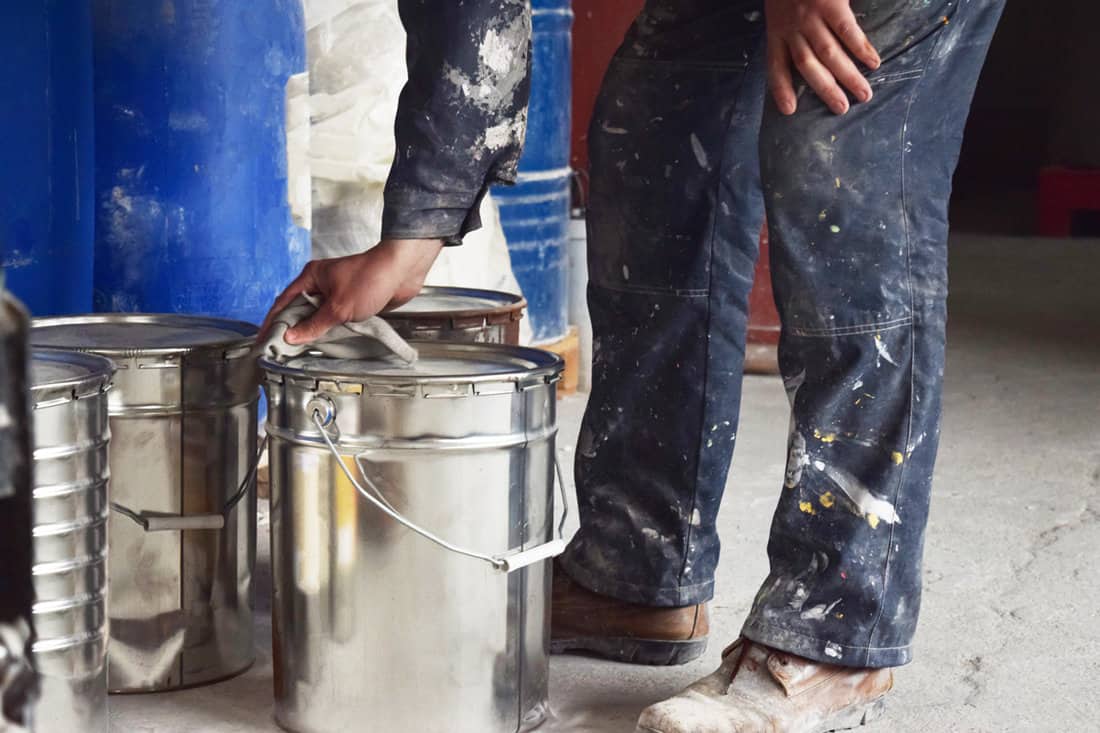Using a spray gun makes painting much easier. But do you know how much paint thinner you should use? Having the wrong paint-to-thinner ratio or proportion can ruin your project. So it's best to learn the right ratio before you start spraying. In this post, we have consulted professionals in the industry to help make your work go smoothly.
Mixing thinner to paint depends on the type of paint and the brand you use. Reading the manufacturer's label is one best practice. The general ratio of 3:1 or 4:1 of paint to thinner does the trick. Put more paint than thinner in your mix to avoid an unwanted lighter shade.
You can also do a test mix. The paint mix must be thin to prevent clogging. Here are the recommended ratios:
- Oil-based paint - 1 gallon of paint: 1/4 cup thinner
- Acrylic paint - 1 gallon of paint: 1.5-2 cups thinner
You got the numbers. Ratios are standard guides to follow, but they're not fixed. You can opt to adjust the desired thickness or thinness of your mix. But there's more to it to be able to nail your painting project. More details await you!
![Painter painting with spray gun. Dark background.Similar images:, How Much Paint Thinner To Use for Spray Gun? [Ratio Recommendations]](https://homedecorbliss.com/wp-content/uploads/2022/08/41.-How-To-Open-And-Use-Klean-Strip-Paint-Thinner.jpg)
Recommended Paint Thinner Ratios for Spray Gun
We sometimes add affiliate links and content that was curated and created by our team with the help of advanced ai tools to help showcase the best design styles.

In general, for thinning process for a spray gun, the ratio recommendation is 3:1 or 4:1 paint to thinner. A similar formula is also acceptable. Learn more about the ratios for these types of paint:
Oil-based Paints
The ratio recommendation for oil-based paints is a minimum of 10% or 1 gallon of paint to 1/4 cup of thinner. Following the general ratio will do.
It is always important to read the manufacturer's label. There you can check the recommended percentage set by the manufacturer and if thinning is required.
You need to thin most oil-based paints for HVLP spray guns. Airless sprayers don't need thinning for oil-based paints.
Acrylic Paints
Most acrylic paints are water-based, and some are chemical-based that need paint thinner to reduce viscosity. One gallon of paint to 12-13 ounces (1.5-2 cups) of thinner will result in an ideal ratio.
As you pour the mix into the funnel, you can check the texture of your paint. You can add thinner bit by bit if you think you need more. Don't try to add too much at a time. It will easily ruin your mix.
Types of Paint for Spray Gun

Discovering the right mix is a must to achieve the exact shade for your paint to spray and to call your project a success. There are two types of paint commonly used for a spray gun:
- Oil-based Paint: This paint is made from the formula of mineral spirits and petrochemical solvents. It takes time to dry, has richer color, is more durable, and is suitable for outdoor work.
- Acrylic Paint: The paint is made of acrylic resin. It's water-resistant when dry, the most popular, dries very quickly, and is recommended for small projects.
Click here to see this white acrylic paint on Amazon.
Types of Spray Gun
Spray guns have different features and may influence how much paint thinner you need to put in them. Two common types of spray guns on the market include:
- HVLP (high volume, low pressure) spray gun: It uses pressure to achieve atomized paint, is popular for indoor work, and works well with oil-based paints.
- Airless sprayer: It depends on high fluid pressure, gets the job done quickly, is ideal for uneven surfaces, and is easily controlled.
Click here to see this HVLP paint sprayer on Amazon.
Types of Paint Thinner

There are a lot of paint thinners available in your local paint shops. They are often used to clean oil-based paints, brushes, and other painting tools or to thin paint to get that appealing mix for your paintwork.
The are two major types of pain thinner: oil-based and water-based. It is common to use oil-based thinners with spray paint.
You may also use water-based paint thinner for water-based paints. Consider the label of the manufacturer for each brand.
Spray Paint Safety Tips
For your DIY paint project, following safety guidelines is crucial. Paint professionals have to undergo training to do an outstanding job. So brace yourself when planning to paint indoors or outdoors.
Here are pointers you should remember before and throughout your spraying:
- Get away from heat or fire and any flammables.
- Dispose of paint cans properly.
- Make sure you have enough access to air.
- Avoid contact to paint.
- Take extra precautions when painting electrical or lighting units.
- Take extra precautions when painting objects that come with flames such as candle holders and fire pits.
Paint Storage

For your paint to be usable even after storing, tightly seal your used paint, and store it upside down so it will form a seal on the lid in a dry area. Of course, don't store it anywhere with flammable materials.
You should also put used paint out of reach from children. Align them with similar liquids to get them when you have a new paint job. Paints may be toxic and have a strong odor. Place themm at a distance far away from food or fabric.
Check out this post to learn more on how to properly store your paints: How To Keep Paint From Freezing In Your Garage
What happens if you thin paint too much?
Oh, this is something you won't like to happen—in case you add more than the needed ratio. Some of the members of an online model-building magazine mentioned in the forum what will likely happen:
It will spray sort of watery and not cover well.
I overthinned some laquers one time way too much and it was a bad move. The piece I was working on became very soft and I ended up ruining it. With water based acrylics thinned too much the paint just wouldn't stick it would be like spraying water on the model though it wouldn't get ruined.
What viscosity should the paint be to spray?
The standard measure of viscosity for spraying is approximately 100 cps (1 P, 0.1 Pa•s). A viscometer is a tool used to measure the viscosity of the paint.
The higher the thickness, the denser it will be. Thus, it will be difficult to spray and may destroy your spray gun.
For spray painting, it is necessary to test the viscosity to avoid trouble. Go through your spray gun's manual to discover if it can handle the level of viscosity your paint has. It usually comes with a viscosity measurement chart.
Check out this stainless steel viscometer on Amazon.
Is paint thinner the same as paint remover?
Paint thinner is used for oil-based paints to thin them out. Although it can also remove paint from brushes and other tools if it's still moist, it's not the same as paint remover.
It works in preserving paint brushes after using them. It can also remove some stains such as grease and oil. It is common to use a paint remover to clean paint even after it has dried. Acetone is a strong solvent that can do that job.
Check this odorless paint thinner on Amazon.
Why do I keep smelling paint thinner?

There are some reasons there's a lingering smell of paint thinner in your house or a part of it. You may have just finished a painting project on most rooms. If not, it can be that your air conditioner is causing a foul smell.
Call for professional help to target the root cause. Breathing in air with the smell of paint thinner is harmful. It can be from acute to chronic effects. It can cause dizziness and skin and eye irritation.
How can you neutralize the smell of paint thinner?
Combat the unwanted smell of paint thinner by doing these helpful tips:
- Retouch your carpets with rubbing alcohol or essential oils.
- Clean thoroughly your hands with paint with heavy-duty soap or mix borax with soap and water.
- For thinner-smelling clothes, wash them using vanilla extract or white vinegar for manual wash.
- Open your windows and keep the air flowing. Ventilate your house well.
Check out this natural hand cleaner on Amazon.
Can paint thinner be reused?
Yes, you can save your paint thinner for your next paintwork. Correct storage is the key.
After cleaning up all the tools, transfer the paint thinner into a new container. Let it sit for a couple of days. The solid will settle at the bottom, making the top layer clear and reusable for future projects.
In Closing
Starting a spray paint project in your house requires a lot of know-how. You want to start the DIY project right by getting the recommended ratio for your spray gun.
From there, you can adjust the mix. It's always a lovely feeling wanting to give your house or furniture a re-do with vibrant paint colors. You should never let chance ruin your paint. Now you can spray your paint with confidence!
Before you go, check out these related articles:





